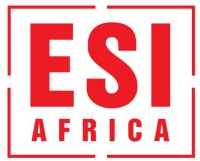South Africa: Investment in energy dominates climate funding
A new report notes that energy dominates climate investment in the country, particularly for renewable electricity generation
The climate transition in South Africa is gathering pace, with new data showing that energy continues to dominate climate-related investment – but gaps remain in adaptation, just transition and concessional financing.
The South African Climate Finance Landscape 2025 report reveals that the country mobilised an annual average of R188.3 billion in climate finance across 2022 and 2023, up from R130.6bn in 2019–2021.
The report notes that energy dominates climate investment, with an annual average of R139.5bn (74.1%) going into the sector, particularly for renewable electricity generation.
This edition – the third in the series – also introduces methodological improvements, including alignment with the South African Green Finance Taxonomy (2022) and the inclusion of four new datasets and 16 additional domestic stakeholders, adding an estimated R32bn annually to tracked flows.
However, despite this progress, it warns that finance flows are still below what is required to meet national climate and development goals.
But the report – compiled by GreenCape and the Climate Policy Initiative for the Presidential Climate Commission – says that South Africa’s climate transition is entering a new phase marked by regulatory, policy and financial reforms that signal a decisive shift from commitment to implementation.
Loadshedding impact on investment in energy security
Energy projects accounted for 74.1% (R139.5bn) of total flows, driven by continued efforts to address the electricity crisis and stabilise power supply.
With more than 6,800 hours of loadshedding recorded in 2023, investments in solar photovoltaic (PV), wind and battery storage accelerated sharply.
The removal of the 100MW licensing cap for private generation in 2022 and the rollout of new wheeling frameworks in metros such as Cape Town and Johannesburg have further spurred private-sector activity, the report notes.
Falling technology costs have also boosted viability. Utility-scale solar PV prices have dropped by more than 80% between 2010 and 2023, enabling projects to proceed with less concessional support.
During the reporting period, average annual investments included:
- R64.8bn in solar PV (47%)
- R14.2bn in wind (10.2%)
- R14bn in energy storage (10.1%) and
- R3.8bn in off-grid renewables (2.7%), with R35.6bn (25.7%) categorised as unspecified renewables.
Investment bottlenecks
Yet adaptation finance continues to lag behind, says the report.
Only 11.3% of total flows supported adaptation – well below the African average of 33.7%.
Such projects, which enhance resilience and reduce vulnerability to climate risks, often lack clear revenue streams, making them less attractive to private investors.
Fiscal constraints further compound the issue: with public debt approaching 74% of GDP and debt service consuming more 20% of expenditure, government capacity to expand adaptation funding remains limited.
Access to finance for municipalities and small, medium and micro enterprises (SMMEs) also remains constrained.
Large infrastructure projects, such as grid expansion into new renewable energy zones or rural electrification, demand substantial upfront capital and carry long payback periods and regulatory uncertainties.
Concessional finance and grants collectively account for less than 15% of total climate flows, leaving critical projects underfunded.
Nearly 60% of total climate finance originated from domestic sources. Commercial banks contributed an annual average of R36.6bn (32.7%), corporations R28.4bn (19.2%) and households R15.2bn (13.6%), reflecting robust local participation.
The report, however, emphasises that macroeconomic headwinds, high borrowing costs and currency volatility continue to deter foreign investment.
International funding landscape
Among international sources, public institutions dominate. Bilateral development finance institutions (DFIs) provided an annual average of R28bn, multilateral DFIs R20.5bn, foreign governments R5.7bn and multilateral climate funds R4.1bn.
Together, these sources accounted for nearly 80% of total international flows, primarily from Western Europe under the Just Energy Transition Partnership (JETP).
Despite the US withdrawal from the partnership in early 2025, renewed commitments from European partners have kept the JETP central to South Africa’s international climate finance landscape.
Energy transition pipeline investment need to be upped
Finance aligned with the just transition remains modest, averaging R16bn annually, mostly from government and DFIs.
Private-sector participation is limited by a lack of clear project pipelines and challenges in defining social investments as climate finance. Actual spending on worker re-skilling and community development is likely higher but remains poorly captured.
Cross-cutting challenges persist – transmission bottlenecks in high-resource provinces constrain renewable rollout, while delays in updating the Integrated Resource Plan (IRP) and uneven municipal permitting processes create uncertainty.
Weak GDP growth and high interest rates continue to weigh on fiscal space and investor confidence.
The report calls for immediate measures to build investor confidence, reduce transaction risks and mobilise financing for bankable projects.
It recommends leveraging existing frameworks such as the Presidential Climate Commission’s Just Transition Framework, the South African Green Finance Taxonomy (SA GFT) and the JETP Country Platform.
Addressing climate funding gaps in South Africa
Over the longer term, structural reforms will be required to address the root causes of the financing gap – including stronger public investment planning, improved institutional capacity, deeper financial markets, and modernised infrastructure systems – to align South Africa’s economic transformation with its climate and development ambitions.
The report says the country’s climate policy framework is now more closely aligned with national development goals, reflecting two decades of progress in integrating climate action into economic and social planning.
It emphasised that as 2025 G20 President, South Africa continues to play a leading role in international climate diplomacy, engaging through the UNFCCC, BRICS and the African Union.
Officials say tracking how climate resources are mobilised and deployed will be critical not only to guide South Africa’s transition but also to inform the strategies of development finance institutions and other emerging economies navigating similar pathways.
Cover photo: krailathyothayath©123rf.com


